The post Blue Maine Coon Cat: Facts, Origin & History (with Pictures) by Ashley Bates appeared first on Catster. Copying over entire articles infringes on copyright laws. You may not be aware of it, but all of these articles were assigned, contracted and paid for, so they aren't considered public domain. However, we appreciate that you like the article and would love it if you continued sharing just the first paragraph of an article, then linking out to the rest of the piece on Catster.com.
Click to Skip Ahead
If you’ve ever seen a Maine Coon in person, it might immediately take your breath away. These are massive, gorgeously stunning creatures. It is no wonder that you’re attracted to them in general, but the blue color is something spectacular!
If you have just witnessed one for the first time, you probably want to learn all you can about this feline. Here are all the details about this lovely blue and all the perks of the breed itself.
Breed Overview
Height:
10–16 inches
Weight:
10–25 pounds
Lifespan:
10–15 years
Colors:
Blue, but also a wide range of other colors
Suitable for:
Virtually any cat-loving home
Temperament:
Docile, gentle, adaptable
The blue color in the Maine Coon is a diluted gene that produces a smoky lavender-gray color. Against their penetrating pair of eyes, you can imagine how the contrast could make the coat truly pop.
In this article, we’re not only going to be discussing the blue color, as it is not a breed itself, but merely one of the potential coat colors. We will also be exploring the Maine Coon breed entirely.
Blue Maine Coon Characteristics

The Earliest Records of Blue Maine Coon in History
Maine Coons were said to have originated in the mid-19th century. You may be able to tell by the name alone that the Maine Coon originated in the state of Maine. These hardy cats were capable of withstanding even the most frigid temperatures of Maine winters.
These cats not only survived, but they also thrived, proving to be a versatile and adaptable animal. These kitties are naturally occurring, meaning no one really put effort into creating them.
The creation of the Maine Coon was a spontaneous one. Researchers seem to believe that the Maine Coon originated from long-haired Angoras that came overseas with travelers. Those cats mixed with domestic cats here, resulting in a massive, fiercely incredible breed.
Because of their size, it has often been rumored that these cats are mixed with some type of wildcat. Because of their pointy ears, size, and markings, they greatly resemble the North American bobcat. It has been long since rumored that the Maine Coon has true bobcat DNA.
Researchers definitively disagree with this ideology. However, it would be pretty cool to know that these massive beasts had wild lineage to match their overall appearance.
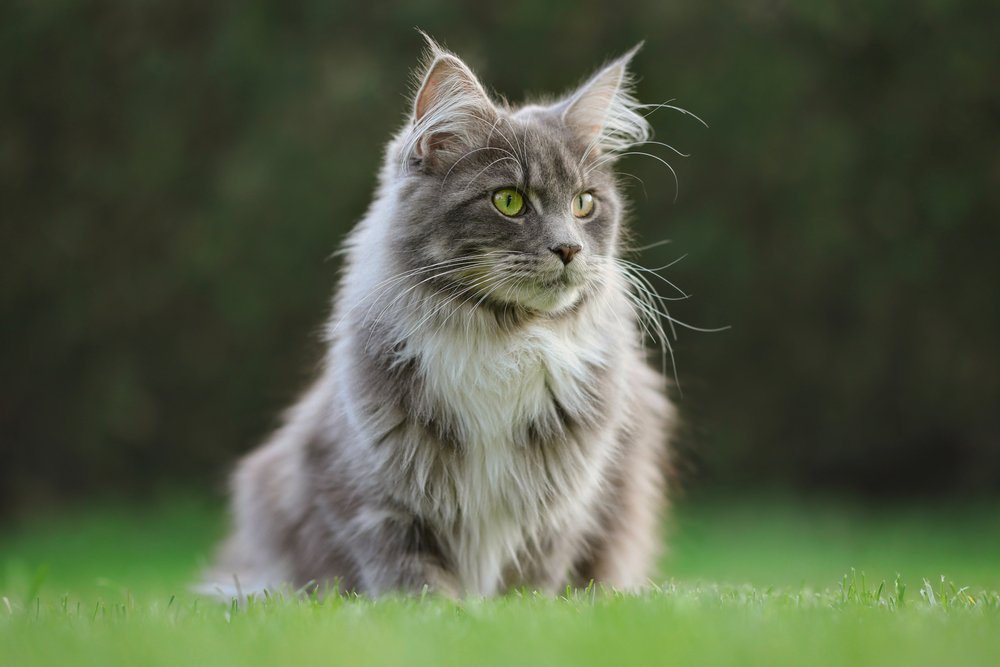
How Blue Maine Coon Gained Popularity
How could you look at a beautiful blue Maine Coon and not think they would be the most popular pick around? These stunning animals are one of a kind with large bodies, tufted ears, and a presence that beats all others.
It is no wonder that Maine Coon cats are incredibly popular today. People are very attracted to their robust size, extremely calm, demeanor, and overall presence. The Maine Coon is an incredibly hardy cat, which means they adapt to many different types of environments. This helps the breed thrive and eliminate a lot of potential issues.
Formal Recognition of Blue Maine Coons
The American Cat Breeders Association recognized the Maine Coon cat breed in 1976. On the other hand, the Cat Fanciers’ Association informally recognized the Maine Coon in 1975, and then officially recognized them in 1976. Blue is one of the many recognized colors of Maine Coons according to the breed standard.
Since then, the breed standards have grown tremendously, creating the overall visual of the ideal Maine Coon we know and love today. There are breeders all across the United States, and even in some other parts of the world now. They are a favorite for many reasons, and it is no wonder that these associations took an interest in this self-developed breed.
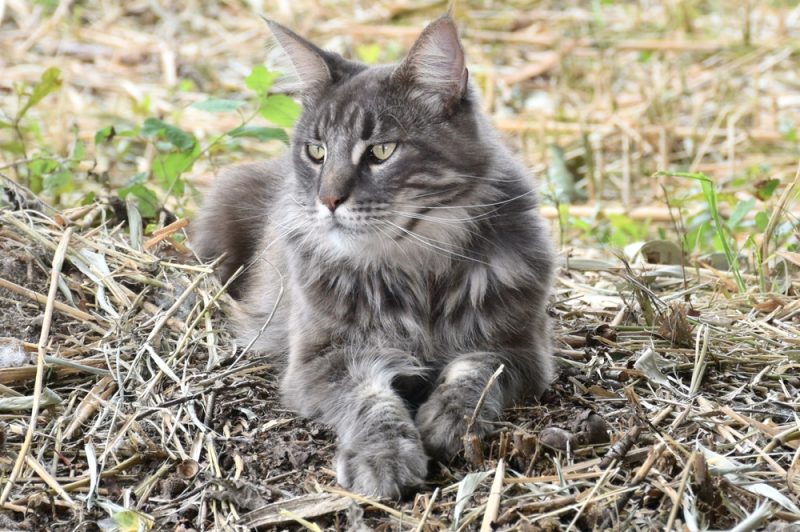

The Top 6 Unique Facts About Maine Coons
So, what would you like most about Maine Coons? Let’s find out.
1. Maine Coons Hold a Record for Being the Longest Cat in the World
We already know that Maine Coons are a massive size. An adult Maine Coon can weigh as much as 25 pounds. On top of that, however, they have gotten actual awards for being the longest-domesticated cats in the world.
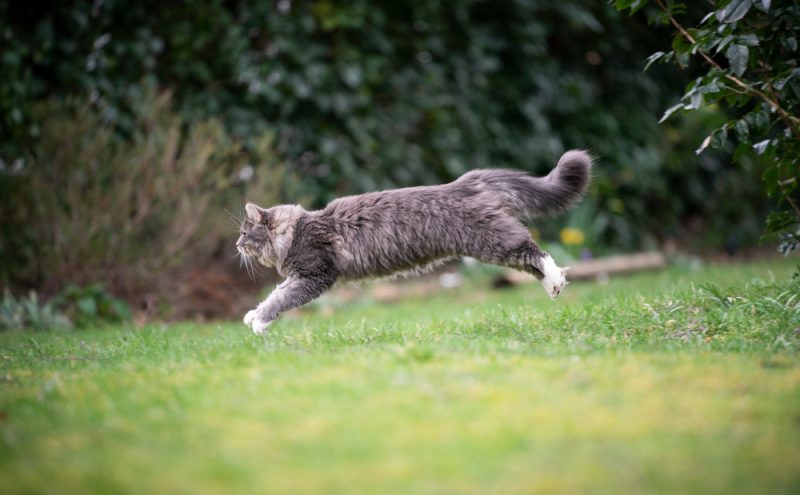
2. Maine Coons Are Widely Revered as Gentle Giants
They are widely known for their incredible and gentle demeanors. These cats are exceptional animals, being the Newfoundland dog of the cat world.
3. A Maine Coon Has a Waterproof Coat
One really interesting thing about a Maine Coon is that they have a waterproof coat. This feature protects them from inclement weather. Since these cats were developed to withstand the frigid environments of Maine winters, their coat helps them adapt accordingly.
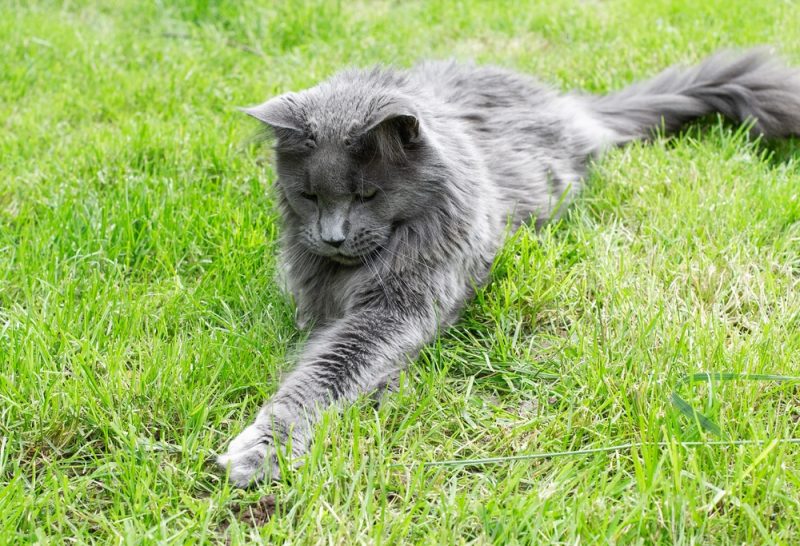
4. Most Maine Coons Have Interesting Paws
Most Maine Coon cats are polydactyl, meaning they have extra toes.
5. There Are Over 75 Colors of Maine Coon Cat
When it comes to a Maine Coon, blue is certainly not the only variety. There are over 75 colors and patterns that exist in the Maine Coon breed alone.
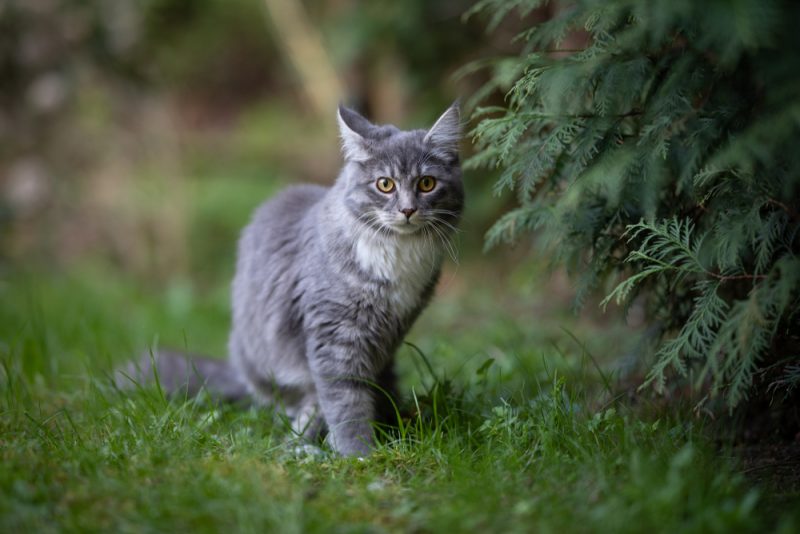
6. Maine Coons Take a Long Time to Mature
What is interesting about this particular cat is that they take longer to grow than any other feline. A Maine Coon does not completely fully develop until they are at least 3 to 5 years of age. After the first year of life, growth does slow down significantly, but they continue to add length and weight over time.

Does a Blue Maine Coon Make a Good Pet?
A blue Maine Coon, or any Maine Coon, for that matter, would make a tremendous pet for virtually any lifestyle. These cats are highly adaptable and extremely agreeable in almost any setting. They can easily make friends with children, seniors, folks with disabilities, other cats, and even dogs!
Granted, you should never leave your Maine Coon alone around your gerbil because they are vicious predators. But when it comes to your average everyday household, these cats fit the mold perfectly.
Something to consider is that the Maine Coon does have an overabundance of hair. This can cause an uptick in shedding, which can trigger even folks with mild allergies. So, even if you’re highly attracted to the breed itself, it might be extremely irritating if you suffer from cat allergies.
A Maine Coon tends to be an adventurer and loves exploring the outdoors. So, if you thought about getting a cat you’re able to leash train, these cats would be ideal candidates. Their protective coats also keep them insulated in extreme temperatures. We never recommend keeping your cat outdoors full time.

Conclusion
Now you know a little bit more about the Maine Coon breed. The blue color is absolutely exceptional, but certainly not the only one that exists. If the Maine Coon sounds like a cat that’s right up your alley, you can look for local breeders in your area.
Keep in mind that rescues and shelters also get purebred cats or mixes thereof. You could always check in to see if you could find a beautiful blue kitty to call your own.
Featured Image Credit: Nils Jacobi, Shutterstock
The post Blue Maine Coon Cat: Facts, Origin & History (with Pictures) by Ashley Bates appeared first on Catster. Copying over entire articles infringes on copyright laws. You may not be aware of it, but all of these articles were assigned, contracted and paid for, so they aren't considered public domain. However, we appreciate that you like the article and would love it if you continued sharing just the first paragraph of an article, then linking out to the rest of the piece on Catster.com.
from Catster https://ift.tt/SsQ6a5V
